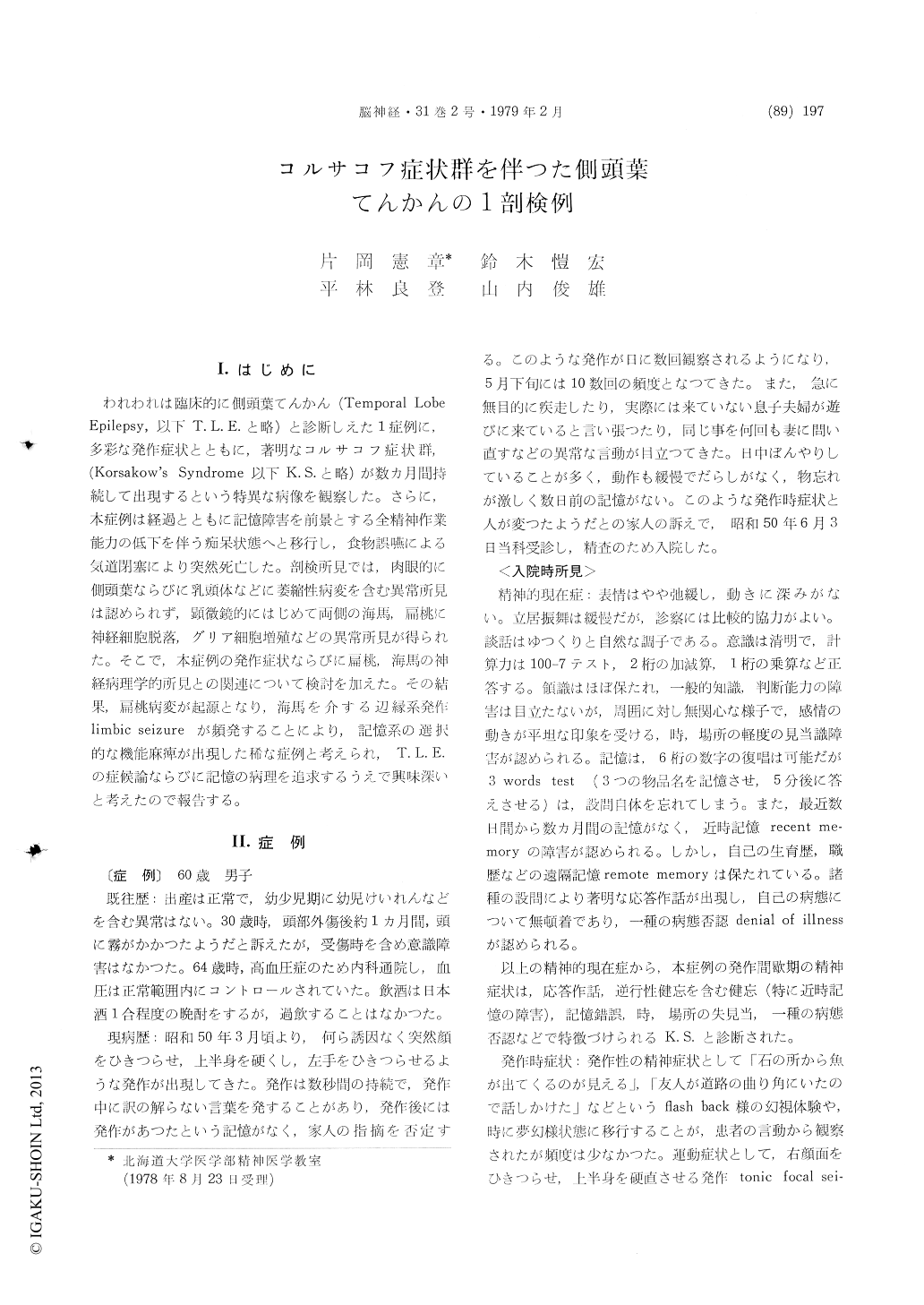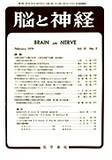Japanese
English
- 有料閲覧
- Abstract 文献概要
- 1ページ目 Look Inside
I.はじめに
われわれは臨床的に側頭葉てんかん(Temporal LobeEpilepsy,以下T.L.E.と略)と診断しえた1症例に,多彩な発作症状とともに,著明なコルサコフ症状群,(Korsakow's Syndrome以下K.S.と略)が数ヵ月間持続して出現するという特異な病像を観察した。さらに,本症例は経過とともに記憶障害を前景とする全精神作業能力の低下を伴う痴呆状態へと移行し,食物誤嚥による気道閉塞により突然死亡した。剖検所見では,肉眼的に側頭葉ならびに乳頭体などに萎縮性病変を含む異常所見は認められず,顕微鏡的にはじめて両側の海馬,扁桃に神経細胞脱落,グリア細胞増殖などの異常所見が得られた。そこで,本症例の発作症状ならびに扁桃,海馬の神経病理学的所見との関連について検討を加えた。その結果,扁桃病変が起源となり,海馬を介する辺縁系発作limbic seizureが頻発することにより,記憶系の選択的な機能麻痺が出現した稀な症例と考えられ,T.L.E.の症候論ならびに記憶の病理を追求するうえで興味深いと考えたので報告する。
A case of temporal lobe epilepsy with Korsakow'ssyndrome was reported.
The patient had his first seizure at the age of 67. The seizure picture consisted of motor complex phenomena such as clonic shaking of the left limb and movements of the right half of the face, together with hyper-tonus of the other limbs. A diminution or loss of consciousness and verbal automatism occurred along with the motor phenomena. Seizures continued at the rate of about ten times a day and a gradual development of memory disturbance and a considerable degree of asthenia occurred. Three months later, he was admitted to our hospital on June 3, 1975. The psychiatric examination disclosed that his general intellectual function estimated by WAIS was at the normal level, despite the existence of signs of Korsakow's syndrome. His memory for remote events was virtually unaffected. But the patient exhibited a behavioral change, consisting of a persistent inactivity and indifference. The general physical and neurological examinations were entirely within normal limits except for the seizures.The brain scan and cerebral arteriogram showed no definite abnormal findings. The electroencephalo-graphy showed a well-developed 9 per second alpha of normal voltage in the posterior head areas in the resting state, and a generalized high voltage 4-6 per second activity during seizure induced by hyperventilation. In sleep, slow wave foci were present in the right anterior temporal area.
The seizures could not be adequately controlled by anticonvulsants and Korsakow's syndrome continued. He died of an airway obstruction from food after being hospitalized for 13 months.
The general autopsy showed pulmonary emphysema and atelectasis. The brain weighed 1,180 grams and showed no macroscopically abnormal findings.
The microscopic examination showed an athero-sclerotic process with thickening of intima of the arteries. A neuronal loss was noted with reactional glial cells in either side of the end-plate and the Sommer secter of Ammon's horn and amygdaloid nuclear complex.
The etiological factors and the pathogenesis of the anatomical lesions were discussed.

Copyright © 1979, Igaku-Shoin Ltd. All rights reserved.


